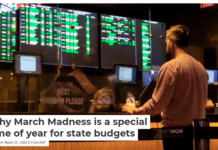

By Jim Macbeth, Murdoch University; Cheryl Jones, Murdoch University, and David Newsome, Murdoch University
From Thursday through Sunday this week the Australian Grand Prix will take over Melbourne’s Albert Park, bringing with it the glamour of fast cars, grid girls and Formula One drivers Raikkonen, Alonso, Hamilton, Webber and … noise and vibration.
Which is strange, because public spaces such as national and urban parks, marine parks and coastal areas have traditionally been understood as an escape from the noise and pressure of urban life, used for appreciative recreation, tranquillity and conservation of the environment.
While authors on The Conversation have suggested a need for more people in parks, the research of my co-authors and I indicates a problem with the rising tide of events that see a concentration of users who are motorised, on mountain bikes or part of running events. Does the impact of these activities on our environment and community outweigh the benefits?
Increase in motorised activity?
A recent article by Professor Glen Searle on The Conversation detailed the use of urban parks for private functions. Issues raised included the legitimacy of charging fees for private use and whether events being staged in urban parks diminish the experience of other parks users.
Aspects of Searle’s analysis are mirrored in the use of national parks, with the emphasis here on the growing use of protected areas for events, especially motorised activities, including 4×4 touring, trail, dirt and quad bikes competitions, four-wheel-drive competitions and Formula One motor races.

mgstyer
These events range from local to international, amateur to professional. They raise questions about community engagement, corporate funding, international profiles, environmental damage and the impact on the use of that space by other users, especially individuals and small groups there for a relaxing time.
Traditionally, threats to public space have been logging (in Tasmania, WA and Victoria), infrastructure developments such as the damming of rivers and flooding valleys (WA, Queensland and Tasmania), mining (bauxite in WA) and now fracking’s likely impact upon Badgingarra National Park (WA) and other sand plain reserves. Hunting has also been re-activated, with recent controversy over hunting in NSW National Parks.
A model to understand impacts and benefits
We propose a model with a set of categories to understand the different usage patterns of motorised events in protected areas, along with governance and community engagement issues.
The four categories are: micro, meso, macro and mega.
Micro level events are local, run by volunteers and often sponsored by a vehicle club. These events are primarily about having a good time in the bush, sometimes with light competition. The only spectators, if any, will be family and friends, and other club members – Sunday afternoon fun such as family picnic days, working bees, tag-along-tours, intra and inter club events.
Meso level events are generally larger, such as Variety Club events – still amateur and voluntarily managed, but attracting participants from outside the local area, possibly interstate. Again, these are not-for-profit operations but supported by sponsorship from local and/ or national related businesses.

Dune buggy racing.
madlyinlovewithlife
Macro level events take us into the professional and for-profit realm of motorised events. They may be “feeders” into larger events attracting international competitors and spectators from interstate. State and local governments often seek and sponsor such events. This level will attract media attention and includes events such as Australasian Safari, part of an adventure genre of which the Dakar rally is the global pinnacle.
Mega events are international competitions, run by international organisations, professional and for profit such as the Australian Grand Prix and Australian Rally Championship. Competitors are also professionals. These events are highly prized by governments to promote tourism and investment involving global financial and global media coverage with international spectators.
The motorsport industry and related manufacturers increasingly see natural areas as places to showcase their products. All four categories have environmental implications but they also have the potential to contribute to social capital and the transfer of learning.
Protected areas

A Formula One car is flown in for the official launch of the 2014 Australian Grand Prix in Melbourne.
AAP/David Crosling
Urban and national parks have specific purposes, including the protection of special environments, flora and fauna. They provide spaces for Australians and visitors to understand our unique landscape and to learn how to “tread lightly” on the land. Tranquillity and peaceful enjoyment are crucial to these objectives. Motors, especially mass motor events and their helicopters, are incompatible with these objectives, including in urban areas.
Even micro events have some potential for environmental impacts, such as disturbance to wildlife, crushing and breakage of vegetation, trail degradation and soil erosion, depending on where the activity takes place. Others users can also be in danger from speeding vehicles or trail bikes.
Larger events have serious, mostly negative, implications for public spaces. Impacts can be a complex mix of social effects including crowding, localised air pollution and noise partnered with biophysical effects including damage to vegetation, soil compaction, erosion and disruption of the normal activities of wildlife.
These impacts need to be factored in to policy and planning as the conflict over competing uses of protected areas gets more intense as traditional passive uses come into conflict with commercial interests.
![]()
Jim Macbeth has received funding from the Desert Knowledge Cooperative Research Centre. He is affiliated with Track Care WA Inc.
David Newsome is a member of Western Australian Conservation Commission and a member of IUCN World Commission on Protected Areas.
Cheryl Jones does not work for, consult to, own shares in or receive funding from any company or organisation that would benefit from this article, and has no relevant affiliations.
This article was originally published on The Conversation.
Read the original article.



















